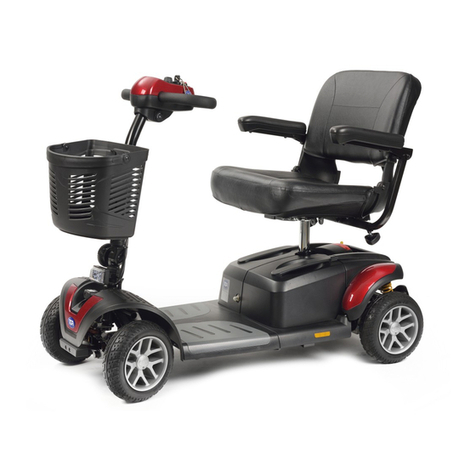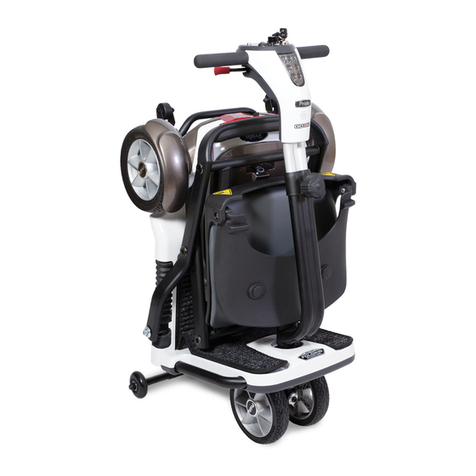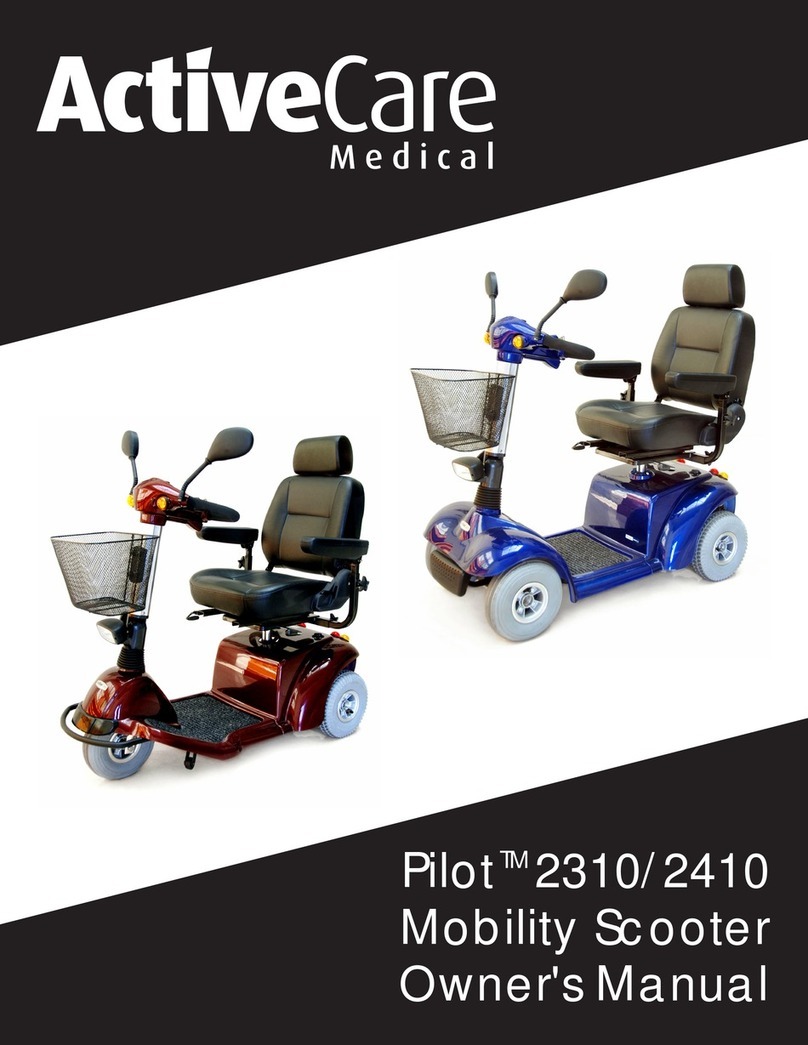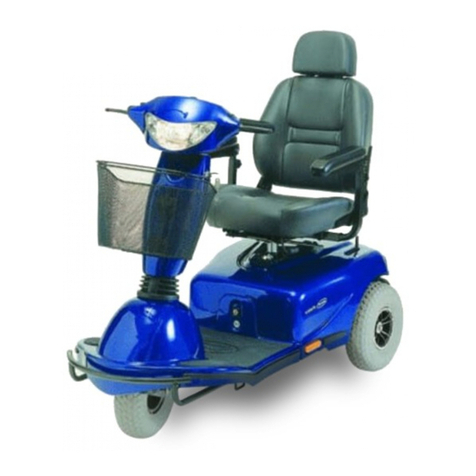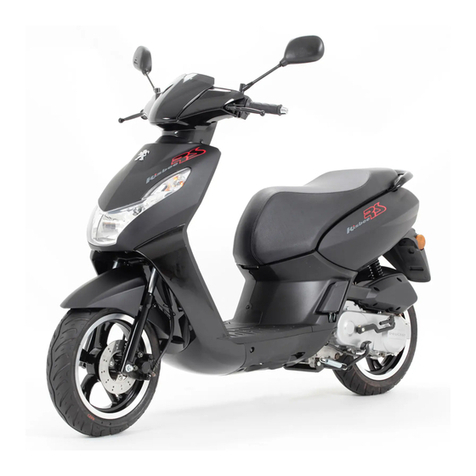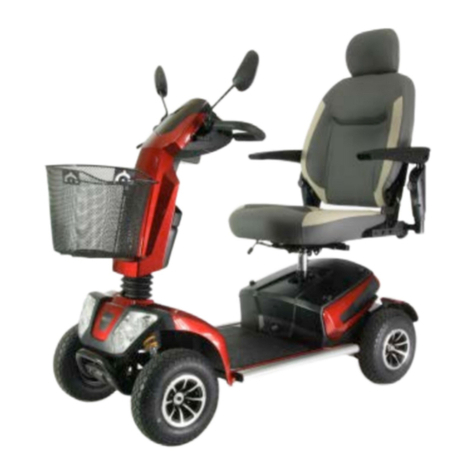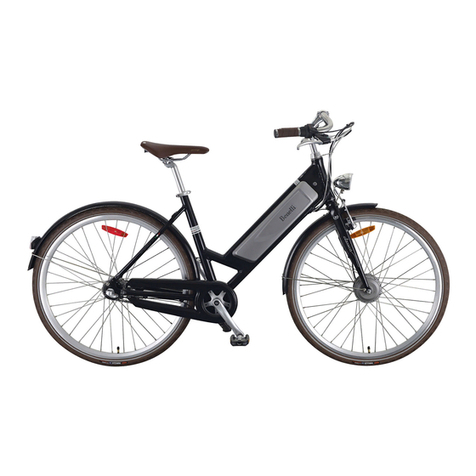Delfast Top 3.0 User manual


3
USER MANUAL
Contents
Dear Customer .............................................................................................................................................................. 4
Introduction ................................................................................................................................................................... 5
Use of Product .............................................................................................................................................................. 5
Behavior in road trafc ............................................................................................................................................... 6
General recommendation for use ........................................................................................................................... 6
Overview of the e-bike ................................................................................................................................................ 8
Quick start guide ........................................................................................................................................................ 10
Turning the bike on and off .............................................................................................................................. 10
Function buttons ................................................................................................................................................. 10
Display ..................................................................................................................................................................... 11
Block of buttons .................................................................................................................................................... 11
Charge the battery ............................................................................................................................................... 12
Seat adjustment ................................................................................................................................................... 12
Mirror adjustment ................................................................................................................................................ 13
Check wheels and brakes .................................................................................................................................. 13
Speed mode ........................................................................................................................................................... 13
Throttle/PAS switch positions ........................................................................................................................... 14
Display and block of buttons ................................................................................................................................... 16
Block of buttons ................................................................................................................................................... 16
Display ..................................................................................................................................................................... 16
1. Display backlight ............................................................................................................................................... 17
2. Speedometer ..................................................................................................................................................... 17
3. Speed mode ....................................................................................................................................................... 18
4. Speed .................................................................................................................................................................. 18
5. Mileage ................................................................................................................................................................ 19
6. Mileage mode ................................................................................................................................................... 19
7. Brake indicator ................................................................................................................................................. 20
8. USB indicator ................................................................................................................................................... 20
9. Logo or Error code ............................................................................................................................................ 21
10. Power scale ....................................................................................................................................................... 21
11. Fault indicator .................................................................................................................................................. 22
12. Battery charge ................................................................................................................................................. 22
13. Assist level ......................................................................................................................................................... 23
14. Power ................................................................................................................................................................ 23
15. Clock or Error ................................................................................................................................................... 24
Menu .............................................................................................................................................................................. 25
1. Backlight brightness ....................................................................................................................................... 26
2. Clock settings ................................................................................................................................................... 26
3. System settings ................................................................................................................................................ 27
4. Auto off settings .............................................................................................................................................. 27
5. Wheel size ......................................................................................................................................................... 28

4
Dear Customer,
Welcome to the Delfast Bikes community! We are thrilled you have joined us. To get you on
your bike as quickly and safely as possible, we have developed a Quick Start Guide which will
give you an overview of all the main features of your Delfast Top 3.0 e-bike.
In this comprehensive Instructions Manual, you’ll nd detailed information on how to get your
bike ready to ride, including assembly, installation and charging instructions, as well as
information on more technical issues. Should you have additional questions, please contact our
technical support team. You can nd their contact details at the end of this manual.
Enjoy the Ride!
Sincerely,
Delfast Bikes Team
6. Advanced settings .......................................................................................................................................... 28
7. Battery info ........................................................................................................................................................ 29
8. Factory settings ............................................................................................................................................... 29
9. Password and access ..................................................................................................................................... 30
10. General information ..................................................................................................................................... 30
12. Exit ...................................................................................................................................................................... 31
11. Screen orientation ........................................................................................................................................... 31
Battery and charging ................................................................................................................................................ 32
Rules for using charging device ...................................................................................................................... 32
Rules for using the lithium-ion battery ......................................................................................................... 35
Storage regulations for the lithium-ion battery .......................................................................................... 36
Unpacking and assembling the e-bike ................................................................................................................ 37
Front wheel – Installation .................................................................................................................................. 37
Handlebar – Installation ..................................................................................................................................... 38
Rear light mounting bracket – Installation ................................................................................................... 39
Mirror – Installation ............................................................................................................................................. 40
Horn – Installation ................................................................................................................................................ 41
Headlight – Installation ...................................................................................................................................... 42
Pedals – Installation ............................................................................................................................................. 43
Battery connection ............................................................................................................................................. 44
Maintenance Guide .................................................................................................................................................. 46
Preventive maintenance ................................................................................................................................... 46
Tips .......................................................................................................................................................................... 46
Electricity consumption ............................................................................................................................................ 47
Wear ........................................................................................................................................................................ 47
Electricity consumption for overcoming 1 kilometer ................................................................................. 47
APP & GPS .................................................................................................................................................................... 48
FAQs ............................................................................................................................................................................... 52
Battery & Charge .................................................................................................................................................. 53
Other ....................................................................................................................................................................... 54
Delfast limited warranty ........................................................................................................................................... 54
Service record .............................................................................................................................................................. 57

5
Introduction
Use of Product
Congratulations!
Your purchase of the Delfast Top 3.0 was a smart choice. It’s a high quality product, recognized
by Guinness World Records as longest range e-bike on a single charge. It also received a World
Record for top speed at Bonneville Speed Week 2021. With this purchase, you can feel condent
that it will not only serve your practical everyday needs, but it will be a ton of fun to ride.
Designed with technical and functional innovation, your Top 3.0 was built exclusively for you,
manufactured using the highest quality materials and components.
Everything you need to know in terms of technical specications, operation, maintenance and
care we have compiled in this booklet for your information and continued reference. Please
note: There is additional information provided in the instructions supplied with the bike’s
components.
The Delfast Top 3.0 e-bike was designed to ride for long distances. Delfast is not liable if the e-
bike is used against its original purpose or for damages resulting from a breach of instructions
laid out in this manual.
Delfast's electric bicycles MUST be ridden in accordance with all local and federal laws. Systems
above 750W that are traveling at speeds higher than 20 MPH are NOT legal to drive on public
roads according to federal laws in the United States, as well as in many other countries. It is up
to the end user to comply with all laws pertaining to the use of these high-powered electric
vehicles. Misuse of high-powered kits or bikes can lead to serious injury or even death.
The bike operator fully understands that electric bike recreational riding is an inherently
dangerous activity. By purchasing a Delfast product the consumer promises to hold harmless
Delfast Inc. and its subsidiaries in the event of an accident and promises not to pursue legal
recourse. In the event a customer wishes to pursue legal action, he/she is obligated to fully
cover all legal defense fees for Delfast, Inc. Customer is fully aware that Delfast’s most powerful
systems (3000W) are not designed to sustain top speeds for more than 30 seconds. Attempting
to sustain top speeds for longer periods of time may result in the system’s temperature sensor
limiting power to protect the system from overheating. It is inherently dangerous and beyond
the scope of our manufacturing specications to attain top speeds for sustained periods of
time of more than 30 seconds per instance. Please be sure to ride safely and within the scope of
the law and ALWAYS wear a helmet and other protective gear.
WARNING! Riding an electric bike is extremely dangerous. Use of this product can result
in serious damage, injury, or death. The Delfast Top 3.0 e-bike functions differently from
conventional bicycles and is dangerous. To minimize risk of serious injury, protective
equipment should be worn at all times, including a helmet. Following all trafc and
vehicle code rules and regulations is necessary. Only increase speed above 20 mph when
driving off road, not on any public roads. You are responsible for your own safety. Use this
product with extreme caution and at your own risk.

6
Behavior in Road Trafc
General Recommendations for Use
Due to the electrical auxiliary propulsion power of Top 3.0, the rider will reach high speeds and
accelerations much faster than they are used to on a regular bicycle. Therefore, the rider should
familiarize themselves with the bike’s power on a legal and trafc–free road before entering
into road trafc.
Safety Tips:
1. Maximum load on the Top 3.0 e-bike must not exceed 265 lb (120 kg).
2. On difcult or rough terrain, reduce maximum load weight. Continuous movement with
maximum load, using the full power of the wheels’ motor, will lead to a rapid discharge of
the battery – which could cause the motor-wheel to overheat and reduce its operating life.
3. Do not completely immerse the motor–wheel in water or use a jet of water under pressure
to wash the motor–wheel. Instead use a brush or a damp rag.
4. Do not use an open ame to dry the electric bike or its battery.
5. Carry out routine maintenance of your electric bike in a timely manner.
6. Only use the e-bike at temperatures ranging from 23°F to 95°F (-5°C to + 35°C). Operation
of the e-bike at temperatures below 50°F (+10°C) could lead to a temporary loss of battery
capacity.
7. Remember to turn off the power of the e-bike after completing your ride.
8. Cover your bike, when possible, to avoid prolonged exposure to the direct sunlight, which
can lead to the overheating of the battery, as well as damage to the coating of the frame
and other elements.
9. Do not store the e-bike near any source of re or explosive element. Do not overheat the
battery.
10. Let go of the throttle when braking. Failure to do so could cause the motor to accelerate
rapidly after the release of the brake lever. This may not be safe.
11. Do not try to independently diagnose, repair, or nalize the design of the e-bike or its
electric circuit. This may be unsafe, and voids the warranty.
●Always wear a helmet when riding;
●Make yourself familiar with trafc rules and abide by rules at all times;
●Be ready to brake at any time and expect the misconduct of others;
●Ride defensively and be considerate to other road users;
●Perform necessary maintenance on your bike to keep it in top condition;
●Use your e-bike only in accordance with its intended purpose (see chapter " Use of
Product");
●It’s safest to refrain from the use of a mobile phone and headset while riding;
●Be sure to observe the maximum weight of 265lb (120kg) of the e-bike;
●Please let your Delfast check regular, according to the recommended service intervals by
an authorized workshop.

7
12. Do not allow liquid or any object (especially conductive) into the battery charging
connector.
13. Never short-circuit the contact terminals of the battery. Not when it is discharged,
charged, or during use.
14. Wash your bike regularly to ensure its longevity and prevent corrosion.
a. Clean your e-bike using special chemically neutral detergents dissolved in water.
b. Use a soft cloth when cleaning; a coarse cloth may create marks on the bike’s
coating.
c. Do not wash with a high-pressure washer; cleaning must be done with a brush or a
damp cloth to prevent water from entering conductive or other e-bike components.
d. Before cleaning, disconnect the power supply.
e. Never charge the device while cleaning.

8
Function Overview of Top 3.0 eBike
Rear light
Battery
Headlight
Front fork
Kickstand
Charge socket
Rear shock
Rear fender
Motor
Belt transmision
Front brake
lever
Start / Stop button
Display
Throttle
Rear brake lever

9
●High-contrast 3.5” IPS color matrix screen.
●Suitable for low temperature, Max -5℃
●Screen rotates and can be easily switched from horizontal display to vertical.
●Speed displays: AVG SPEED, MAX SPEED, SPEED (Real–time).
●Mile or Kilometer Display: Can be set in accordance with customer preference.
●Real-time power indicator displays as digital or analog. Power reading is computed
through the optimization algorithm, which is not affected by the start–stop uctuation of
the motor. If the system supports battery communication, the accurate percentage of
power will be displayed.
●Adjustable backlight brightness: 1st level is the darkest, 5th is the lightest
●Level Assist: could be set: 3–level, 5–level, 6–level, or 9–level.
●Mileage indicator: Odometer/Trip distance/Clock/Riding time.
●Clock: Powered by small replaceable battery, keeps time when display is closed
●Error code indicator.
●Ebike self–checking function.
●Battery information display (battery communication is required).
●Endurance Mileage showing (battery communication is required).
●USB charging port: 500mA/5V. To turn on/off, press the "M" button and hold down for 2–3
seconds until indicator appears/disappears on the display.
●Software upgrade: Software can be upgraded through UART when connected to wi-.
Display UKC-1 Block of buttons

10
Quick Start Guide
Turning the bike on and off
Function buttons
LIGHT SWITCH is used to turn the headlamp OFF and ON.
LIGHT CONTROL is used to switch between light beam and
low beam headlights.
TURN SIGNAL SWITCH is used to indicate right or left turns
by switching the lever to the appropriate position, indicated
by the arrows. The corresponding turn indicator will be
activated on the front and rear blinkers.
SOUND SIGNAL button is used to provide audible signals to
other road users. Note that here may be restrictions on the
use of the horn in some instances.
The THROTTLE knob is twisted to add or reduce speed.
Before you start riding your e-bike with the help of the motor, turn off the Bluetooth alarm
system using the remote control by pressing the button with the image of the open lock. Next,
turn on the e-bike by double-clicking on the button with the image of a lightning rod on the
remote control, or by pressing the Engine START/STOP button on the bike frame.
A. Push the Engine START/STOP button on the e-bike or
use the supplied remote control.
B. The remote control has the following buttons:
1. SEARCH: Locates your bike; making a beep sound.
2. TURN ON / OFF the motor power.
3. UNLOCK: deactivate the alarm.
4. LOCK: activate the alarm.
Light Switch
Throttle
Unlock
Lock
Light
Control
Turn Signal Switch
Sound Signal
Turn ON / OFF
Search

11
Main Display
Block of buttons
Using the display and block of buttons, you get access to information about the state of the
e-bike:
increase assist level
decrease assist level
short push will change the speed mode
short push will change the mileage mode, double push will enter the menu
1. Display backlight 11. Fault indicator
12. Battery charge
13. Assist level
14. Power
15. Clock or Error
2. Speedometer
3. Speed mode
4. Speed
5. Mileage
6. Mileage mode
7. Brake indicator
8. USB indicator 9. Logo or Error code 10. Power scale
M
M
Button Button
ButtonButton

12
Charging the battery
Seat Adjustment
Your Delfast Top 3.0 has a high-quality new generation lithium-ion battery. After turning on the
e-bike, check the battery charge level on your e-bike’s display screen.
Charging the bike will take approximately 6 hours. Be sure to fully charge the battery before
operating your e-bike for the rst time. To charge your bike:
●Insert charger cable into the e-bike’s charging socket, then connect the charger to a
power source.
●Install the battery and charger out of the reach of children.
●Do not cover the charger with ammable or any other objects.
●To prevent electric shock, never disassemble the charger.
●Do not allow liquids or metal objects into the charging device.
●WARNING: Do not use the supplied battery charger to charge batteries from other
manufacturers or to charge any other types of batteries.
Charging at any time, even after a partial discharge (e.g., after a short distance of a few
kilometers) is possible.
The main display is equipped with a charging indicator:
●Red color: Battery is currently charging
●Green color: Battery is fully charged
If the battery charge indicator does not change color for a long time, lights up red, the battery
pack has an elevated temperature, and/or an abnormal smell has started during charging —
this indicates the charger cable or battery has been damaged. Disconnect the charger cable
and take it to a repair shop.
For convenience and maximum safety when driving an e-
bike it is important to adjust your seat to an appropriate and
comfortable t. To do this, set your bike seat to the height
that sitting and holding the handlebar grips of a bicycle,
allows you (the driver) to touch the ground with your feet.
Seat adjustment and tilt steering adjustment similar to the
adjustment on a regular MTB/mountain or street bike. Simply
adjust the seat height and tilt the handlebars in the preferred
position. Be careful to not exceed the maximum height safety
line that is indicated on the seat pillar and handlebars.
*If your e-bike is equipped with a motorcycle saddle it is already adjusted to the optimum
position at the factory. Additional saddle adjustment is not required.

13
Mirror adjustment
Check wheels and brakes
Speed modes
Speed modes are selected by a set of switches located on the frame
under the seat.
There are three speed modes, you can easily switch between them:
I– Speed mode 1 - Limited: 16 mph (25 km/h);
0– Speed mode 2 – Class 2: 20 mph (32 km/h) limit, this is the
maximum legal setting in the USA; it is a Class 2 throttle assisted e-
bike;
II – Speed mode 3 - Unlimited: 50 mph (80 km/h), only legal when
driving outside of public roads. Use this mode according to Use of Product paragraph.
Sit on your e-bike in the riding position to adjust the mirrors. Look into your right and then left
mirror and set your elbow in the center position between the top and bottom of the mirror –
you shouldn't be blocking more than 1/4 of the inner corner of the mirror. The remaining area
should reveal the side and back visibility.
The primary purpose of adjusting side mirrors is to be able to see clearly what’s behind and
beside you, at a quick glance. If the above direction is not helpful, simply adjust the side mirrors
to suit your own preference for maximum safety.
Drive mode
There is a drive mode switch, which sets the e-bike movement mode.
Throttle: the motor operation is controlled only by the throttle knob. The throttle knob used to
add or reduce speed.
Pedal Mode – The movement is provided by a rider applying force to pedals, like any standard
bicycle.
PAS (Pedal Assist System): the motor turns on automatically during the rotation of the pedals.
The throttle knob is not active.
A. Inate tires to the correct operating pressure 2.2 bar.
B. Test to make sure that the front and rear brakes are working
correctly.
1. 1. Push the front (right) and then rear (left) brakes. Check
to make sure:
a. Brake levers move smoothly
b. Brakes pads are making contact with the brake disc.
c. When the brake levers are in the down/engaged
position, the levers do not touch the handlebar grip.
2. Release the front and rear brake levers.
a. They should return to their original position.
Inating the tiers

14
Throttle/PAS Switch positions:
I– Throttle mode activated;
0– Pedal mode activated;
II – PAS mode activated.
WARNING! When you select in the pas (pedal assist) mode, be careful when using the
pedals. The e-bike can accelerate and the loss of control can cause injury.
WARNING! Do not make sharp turns on the e-bike, when moving with the motor on.
The loss of control can cause injury.
To minimize battery usage, start your bike’s movement pedal mode and then activate
the electric drive (either throttle or PAS mode) drive. This signicantly (by 15–25%)
increases the mileage driven between recharges, since it is at
the beginning that the bicycle with the motor consumes the
most electricity/energy.
After starting the initial movement of the e-bike in one of the above ways, to continue to use
the motor, simply turn the accelerator handle “throttle”, located on the right side of the steering
wheel, in the “toward you” position and continue driving. By increasing or decreasing the angle
of rotation of the accelerator around its axis, you can smoothly adjust the speed of a bicycle
with a motor.
You can regulate the speed of the e-bike when the motor is turned on by periodically using the
pedals. With every pedal rotation with your feet, the motor will either connect, or increase
power and help the bicycle move as you pedal.
This mode of movement on a e-bike with a motor (PAS) is the most economical mode for
battery power consumption. In addition, pedaling the e-bike with your feet is very effective in
preserving power when driving on sand, dirt, gravel, and especially when driving uphill.
For your safety, slow down before turns. Do not, or use minimal, acceleration with the throttle
during any turn. Take all turns at low speeds in order to stay safe for yourself and for others.
In order to get the maximum possible distance on a single battery charge, it is recommended
to observe the following rules:
1. Avoid unreasonable braking and complete stops. Accelerating consumes a lot of battery
power.
2. Accelerate evenly. Try to move at the medium speed.
3. To reduce speed, release the throttle in advance of braking, instead of using the brake, if
possible. Be careful and alert when doing this.
4. When driving uphill, in strong winds, on a dirt road, or with a heavy load, move at the
medium speed.
5. In addition to the above factors, many other conditions affect the distance of the e-bike on a
single charge: the load on the e-bike, tire pressure, road gradient, road surface quality,
ambient temperature, etc.
Throttle / PAS Switch
Speed Limit Switch

15
Recuperation:
The motor can generate energy and charge the battery through the regenerative braking
system, which activates when braking to decelerate or stop. Recuperation begins when you
slightly push one or both of the brake levers, the e-bike begins to slow down because the motor
works like a generator.
If you push more forcefully on the brake levers the you see or feel the brake pads and brake disc
engage, the braking system will do the braking action – and regenerative braking will be
bypassed.
During recuperation the batteries are charged which allows you to increase the distance of a
trip on your battery power. Use recuperation to slow down instead of braking with the brake
pads. It will extend the lifetime of the brake pads and brake disks.

16
Display and block of buttons
Block of buttons
Display
let to move through the menu right and up, or increase value
let to move through the menu left and down, or decrease value
short push will change the speed mode
short push will change the mileage mode or enters exits the menu, conrms the values
M
Button Button
ButtonButton
M
1. Display backlight 11. Fault indicator
12. Battery charge
13. Assist level
14. Power
15. Clock or Error
2. Speedometer
3. Speed mode
4. Speed
5. Mileage
6. Mileage mode
7. Brake indicator
8. USB indicator 9. Logo or Error code 10. Power scale

17
1. Display backlight
2. Speedometer
Icon show that the night mode of the display backlight is on.
Push and hold the button on the block for 3 sec to turn ON/OFF the night mode.
This mode is used to prevent the driver from being blinded during a night trip.
By default, the night mode is off.
Speedometer gauge show the speed in visual form

18
3. Speed mode
4. Speed
RT SPEED AVG SPEED MAX SPEED
Speed mode:
●RT SPEED – real-time speed
●AVG SPEED – average trip speed
●MAX SPEED – maximum trip speed
A short push of the button will change the speed mode.
Show a numeric value of the speed depending on the chosen [3] speed mode
●RT SPEED – real-time speed
●AVG SPEED – average trip speed
●MAX SPEED – maximum trip speed
By default is km/h

19
5. Mileage
6. Mileage mode
Show a numeric value depending on the selected [6] Mileage mode
By default is km
Mileage mode:
●TRIP/KM – trip distance
●ODO/KM – whole distance travelled
●TIME – time trip
Short push the button on the block to change the [6] mileage mode
00246
TRIP/KM
01246
ODO/KM
03:40
TIME

20
7. Brake indicator
8. USB indicator
The brake icon shows that the left or right brake lever on the handlebar is pushed
If the icon is not shown when you push the left or right brake lever, this shows a malfunction of
the related brake lever.
The icon shows that the USB socket is turned ON.
Push and hold the button to turn ON/OFF the USB socket
The USB socket can be used only for charging portable devices
Make sure that the power consumption of the portable device is not more than 5V and 0,5A
M

21
9. Logo or Error code
At this area of the display is shown the logo or error code
If an error code is shown it is the malfunction of the system
10. Power scale
Graphic [10] power scale shows the power consumed by the engine
Table of contents
